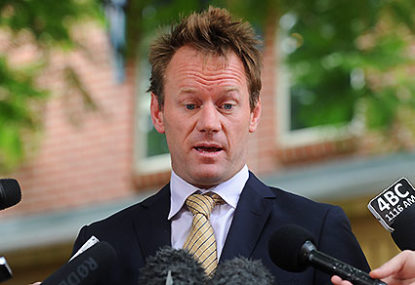The All Time XI For All Time: New Zealand
New Zealand took 28 years to win a Test match, finally triumphing in 1956. There were plenty of skilled individuals before that but not a complete team.

As the third edition of the turbo-charged, fluoro-laden Big Bash League kicks (or explodes) off in Melbourne in a fortnight, we are again reminded of the shifting tectonic plates that define the modern cricketing Australia.
Since Cricket Australia set out to win the hearts and minds of Australia’s disenfranchised youths through a brash, bold and polychromatic carnival spectacular, there has been a growing discontent from ‘old cricket’ supporters.
As the T20 extravaganza continues to encroach on the traditional summer calendar and inhibits preparations for major series, the balancing act is becoming somewhat similar to those performed in a French-Canadian circus production.
Although in a perfect world cricket would retain its existing followers whilst accepting lavish amounts of young convertees, even the most optimistic crystal-baller would acknowledge that there must be compromises.
Whilst it could be considered simplistic to utilise a basic loss-gain ratio, CA would recognise that bare numbers are the best way to tempt advertisers and broadcasters to their pockets.
And although losing 10 percent of its existing base in exchange for a 30 percent increase in BBL attendances would seem a desirable circumstance, the administrators need to look beyond the figures to gauge the true appreciation of their losses.
The 10 percent may not have another seven decades of consuming left in them, but they provide the backbone to Australia’s cricketing foundations. Spending their summer weekends hunched over a scorebook, manning the sightscreen and making up the numbers in the fifths, they are of immeasurable value to the game.
Twenty20 cricket’s strength could also be its greatest weakness. Shorter attention spans and hectic modern lifestyles may inhibit the form’s ability to develop rusted-on, lifelong supporters.
As basketball in Australia found out in the early years of the new millennium, a quick fix entertainment package can quickly wear out if the consumer – a term sure to be bandied around a lot at Jolimont – does not have an attachment to the product, and merely sees it as a form of short-term diversion.
Cricket Australia has more to lose than gain by branding ‘franchises’ with flashy nicknames, blinding uniforms and hashtagged venue names.
The A-League has set a wonderful example in creating franchises that have a sense of tradition and legitimacy, and have been successful as a result.
I can’t imagine many South Australians taking to a football side named the Adelaide SuperBlues, donning fluorescent yellow and blue jerseys and playing out of the #The_Pain_Emporium.
Youths can be shallow, but do not act like moths to a lamp whenever something shiny is placed before them.
Instead they’ve been presented a club, the exclusively preferred term, with a traditional name, strip and ground, something the majority of BBL sides aren’t endowed with.
The A-League has united football supporters of young and old, some who would have found it hard to leave behind their beloved NSL clubs for the brave new world.
As Cricket Australia continues to embark on the branding regime that has befallen the new franchises, it continues to create a contrast between the old and new cricketing worlds. They’re making the transition from one to the other, as they claim the whole point of the exercise to be, even harder for new supporters of the game.
Perhaps a more gradual method of transition was to be called for, as Warwickshire are attempting with their new T20 identity, but the ship might just have sailed on that notion.
The key term is legitimacy, something the BBL sides will struggle to gain with titles more suited to a dance troupe or roller derby team.
Perhaps the Brisbane Bulls and Sydney Blues are the future for the league, utilising monikers well established through their longer-form counterparts and respected on the national sporting scene.
But whatever names appear on scoreboards over the next few years, a reconciliation between the new frontier and the old customs is needed if the one-time attendees and lifelong supporters are to be united in the stands at either a domestic T20 clash or Test match.